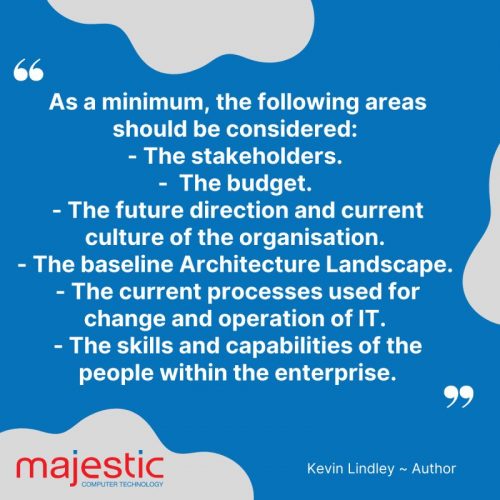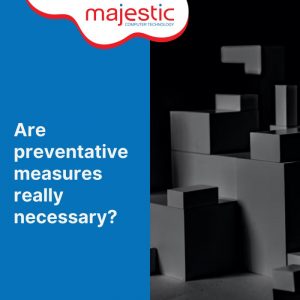Benefits of using an Enterprise Architecture approach when strategising for, or investing in, IT
Many poor investment choices are caused by one factor – a lack of consideration for the broader impact that any plan of action can have on an organisation as a whole, regardless of how well that plan addresses the issue at hand. Employing a Solutions based architecture approach solely, without the overlay of an Enterprise architecture approach, is a sure-fire way to create that very issue.
When Majestic engages with new prospects or clients in the SME space, we see a recurring issue that limits the success of their IT strategy. The advice they have historically received, focuses almost exclusively on the application of technology to address very specific issues, usually the most pressing one at hand. While there is an immediate benefit to an investment that resolves the issue at hand, applying that solution without taking a broader view of potential implications down the track often causes trouble. The most common consequence is a poor technology investment. The challenge is to resist fixing the immediate problem a hand and to step back and take a more holistic view. There are four questions that should always be asked:
- How does this fit within the scope of what we’re doing overall?
- If it doesn’t fit, What should we be doing instead?
- Is this this solution going to get the best possible outcome for our organisation?
- Where should we be prioritising our IT investment to get the best possible outcome for our organisation?
We discussed what can happen to organisations who fail to apply an Enterprise approach to their IT infrastructure investments. So what happens to those that do? Organisations who make the enterprise architecture approach a focus get great outcomes.
- They look holistically at their overall plan.
- They consider their 12 month, two year and five year timelines.
And whatever the case may be, they then cut that into consumable chunks and break it down into projects. They work to understand all the underlying factors and facets of what they’re trying to achieve and then, like pieces of a puzzle, start placing them together in order to achieve a cohesive, well thought out approach. By considering the bigger pieces of the project through planning and analysis, they end up with a better outcome when they eventually invest, receiving a much more significant return on their investment. It’s like the old saying of ‘Measure twice and cut once’ – the same thing applies in a technology context.
Kevin Lindley, a published educational author, urges the importance of utilizing Enterprise Architecture. When investing in technology, it’s fundamentally important to consider the broader picture of the business’ processes and their goals. Without this broader analysis, the critical aspects will not have been considered, resulting in poor investment choices.



